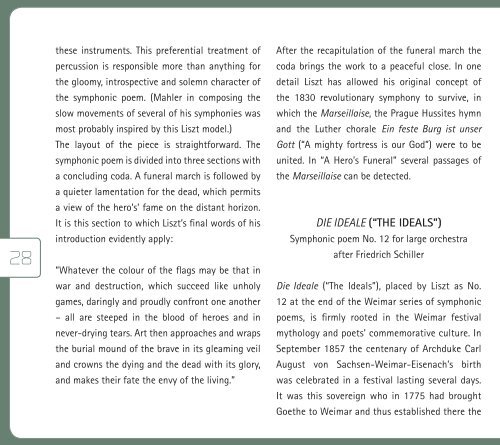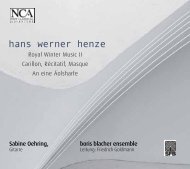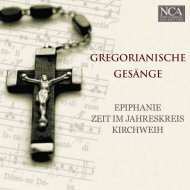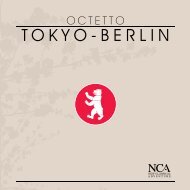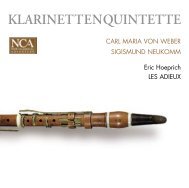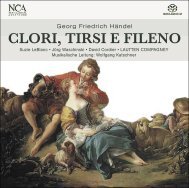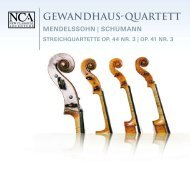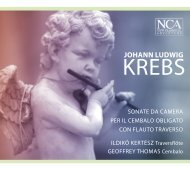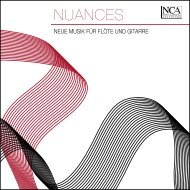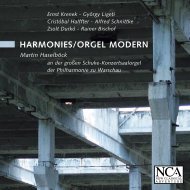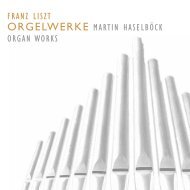FRANZ LISZT - nca - new classical adventure
FRANZ LISZT - nca - new classical adventure
FRANZ LISZT - nca - new classical adventure
- No tags were found...
You also want an ePaper? Increase the reach of your titles
YUMPU automatically turns print PDFs into web optimized ePapers that Google loves.
these instruments. This preferential treatment ofpercussion is responsible more than anything forthe gloomy, introspective and solemn character ofthe symphonic poem. (Mahler in composing theslow movements of several of his symphonies wasmost probably inspired by this Liszt model.)The layout of the piece is straightforward. Thesymphonic poem is divided into three sections witha concluding coda. A funeral march is followed bya quieter lamentation for the dead, which permitsa view of the hero’s’ fame on the distant horizon.It is this section to which Liszt’s final words of hisintroduction evidently apply:After the recapitulation of the funeral march thecoda brings the work to a peaceful close. In onedetail Liszt has allowed his original concept ofthe 1830 revolutionary symphony to survive, inwhich the Marseillaise, the Prague Hussites hymnand the Luther chorale Ein feste Burg ist unserGott (“A mighty fortress is our God”) were to beunited. In “A Hero’s Funeral” several passages ofthe Marseillaise can be detected.DIE IDEALE (“THE IDEALS”)Symphonic poem No. 12 for large orchestra“court of muses” of <strong>classical</strong> literature. During thefestival (September 3 rd ) the foundation stones forthe statue of Christoph Martin Wieland and thegrand equestrian statue of Carl August were laid,and on the next day (4 th September) the doublestatue of Goethe and Schiller by Rietschel wasunveiled at the entrance to the Hoftheater, which– along with the others – still counts as one of themost prominent landmarks of the city of Weimar.The festival reached its climax and conclusionwith a festival concert conducted by Franz Lisztin the Hoftheater, in which Liszt presented threelarge-scale works of his own composition: An diepoem (rather than, say, a concert overture orsome such other).The work has as its programmatical base Schiller’sphilosophical poem of the same name, a productsteeped in notions of German idealism and firstpublished in the Musenalmanach in 1795. It dealswith nothing less than human ideals and how theyare treated. In order to clarify the flow of ideasof his symphonic poem Liszt had several verses ofSchiller’s poem printed at the beginning of eachsection of the score, although it must be said hetreated the poetical basis in a somewhat cavalierafter Friedrich SchillerKünstler (“To Artists”), for chorus and orchestra, fashion, making numerous alterations to it, even28 29“Whatever the colour of the flags may be that inafter the text of Schiller’s poem Die Künstler; Diemore so than he did, for example, in Les Préludes.war and destruction, which succeed like unholygames, daringly and proudly confront one another– all are steeped in the blood of heroes and innever-drying tears. Art then approaches and wrapsthe burial mound of the brave in its gleaming veiland crowns the dying and the dead with its glory,and makes their fate the envy of the living.”Die Ideale (“The Ideals”), placed by Liszt as No.12 at the end of the Weimar series of symphonicpoems, is firmly rooted in the Weimar festivalmythology and poets’ commemorative culture. InSeptember 1857 the centenary of Archduke CarlAugust von Sachsen-Weimar-Eisenach’s birthwas celebrated in a festival lasting several days.It was this sovereign who in 1775 had broughtGoethe to Weimar and thus established there theIdeale, and “A Faust Symphony after Goethe”,which was played after the interval in theprogramme. Die Ideale related perfectly to thescheme of the festival programme; the differencebetween this and the works of the first half of theperiod at Weimar as musical director is that theprocess of reflection on the <strong>new</strong> genre has alreadyachieved results and the piece established itsplace in the concert programme as a symphonicIn addition he gives each of the chief concepts ofthe poem its own title, which at the same timeserve as chapter headings to the main sectionsof the work: “Resurgence” – “Disappointment”– “Preoccupation” – “Apotheosis”. (Ought oneto read into this sequence of thoughts anunderlying text expressing Liszt’s own reflectionson his work at Weimar, along the lines of: onlycontinual application to “ideals”, and the constantenglish


